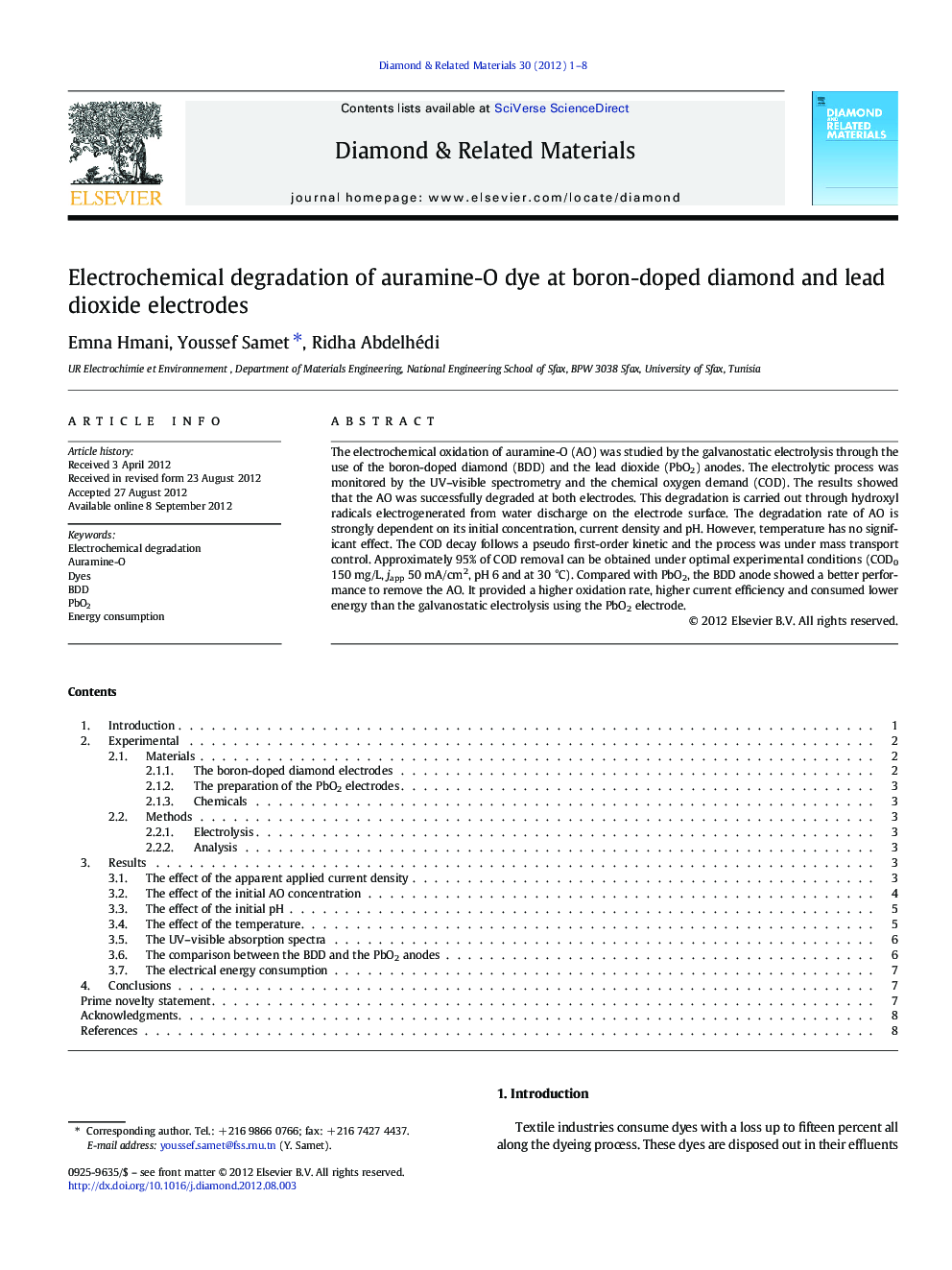| Article ID | Journal | Published Year | Pages | File Type |
|---|---|---|---|---|
| 7111584 | Diamond and Related Materials | 2012 | 8 Pages |
Abstract
The electrochemical oxidation of auramine-O (AO) was studied by the galvanostatic electrolysis through the use of the boron-doped diamond (BDD) and the lead dioxide (PbO2) anodes. The electrolytic process was monitored by the UV-visible spectrometry and the chemical oxygen demand (COD). The results showed that the AO was successfully degraded at both electrodes. This degradation is carried out through hydroxyl radicals electrogenerated from water discharge on the electrode surface. The degradation rate of AO is strongly dependent on its initial concentration, current density and pH. However, temperature has no significant effect. The COD decay follows a pseudo first-order kinetic and the process was under mass transport control. Approximately 95% of COD removal can be obtained under optimal experimental conditions (COD0 150 mg/L, japp 50 mA/cm2, pH 6 and at 30 °C). Compared with PbO2, the BDD anode showed a better performance to remove the AO. It provided a higher oxidation rate, higher current efficiency and consumed lower energy than the galvanostatic electrolysis using the PbO2 electrode.
Related Topics
Physical Sciences and Engineering
Engineering
Electrical and Electronic Engineering
Authors
Emna Hmani, Youssef Samet, Ridha Abdelhédi,
